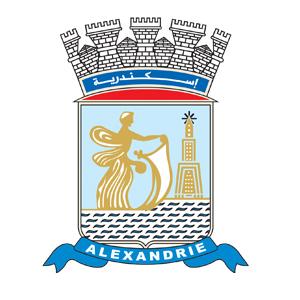












Alexandria is Egypt’s second most populated and important city. Serving nearly 15 million people.
The city has a severe traffic congestion problem. Navigating and moving about the city is a laborious task.

The city’s sidewalks commonly narrow down to give way to roads. Prohibiting increase of foot traffic. Walking culture is non-existent. Alexandria is a heavily car-dependent city.
The result is an overly concentrated use of roads exclusively for cars.
As a result, traffic congestions are constant. And being in one is a nightmare.
Energy consumption is exceptionally high.
Air quality and pollution peaks at multiple times during the day.
Streets are exceedingly noisy during both day and night.
Walking is unsafe and difficult due to over crowded roads and speeding vehicles.
Roads are thus unfit for pedestrians, let alone children, the less able and the elderly.
As for the sidewalks, the city has generous examples to showcase the difficultly in walking through its streets.
Numerous instances where the sidewalk is regularly interrupted results in more people walking on the street rather than on the sidewalk.
The sidewalk itself, extremely narrow in many locations throughout the city is therefore turned into a parking space for cars.

Other instances have large objects or street signs placed in the centre. Again, interrupting the natural flow of walking.


EVERYTHING BY CAR = EVERYTHING MUST HAVE PARKING
Estate value as such decreases due to low quality urban environment.
The state is required to subsidise fuel as vehicle demand (including public transport) is very high.
Retail locations seem unattractive and unpleasant due to unattractive streets and low foot traffic.
The city thus attracts low profile businesses. With high profile businesses fleeing to Cairo and new developments seeking high urban value far away from Alexandria.

Alexandria in turn, fails to attract new investors or businesses. Spiralling down from what was once the city of royals.


DIFFICULTY WALKING
DIFFICULTY ENJOYING
DIFFICULTY INVESTING
The problem exists not just on the commercial and economic level.
Research from the world’s most prestigious institutions highlights the severity of such problems across multiple dimensions.
The Lancet, the prestigious British medical journal, argued that whether you are in London or Mumbai, interventions to make walking and cycling safe and comfortable are radically at bringing down emissions than the technological fixes being pushed by the transportation industry.
Egypt is a largely car-dependent country, many poor citizens into a method of transport they cannot afford.
Researchers for HewlettPackard convinced volunteers in England to wear electrode caps during their commutes and found that whether they were driving or taking the train, peak-hour travellers suffered than fighter pilots or riot police facing mobs of angry protesters.
A person with a onehour commute has to earn more money to be as satisfied with life as someone who walks to the office.
40%
39%
people who endure more than a fortyfive-minute commute were more likely to divorce
What is crucial for healthy living is quantity, but regular exposure, daily doses of nature.

Hello, future.
A multimodal street, meaning multiple modes - is a street hosting different types of transportation methods.
In essence, a multimodal street can start from featuring the conventional vehicle road and a simple sidewalk.
Variations can start to level with additions such as a cycle lane, bus lane, tram tracks and so on.
The idea is to create more options for travel. Catering to the diverse needs of our residents.
This allows us to divert private and public car trips into more friendly and sustainable methods of transport.

This leads to lower energy demand, lower traffic, lower air and noise pollution.

While ultimately increasing urban value, increasing retail and economic activity, increasing attractiveness for investors and developers and increasing interest in tourist attractions.
This simple redesign of a street, redefines the street itself and its activities, making it an attraction in its own right.
Lets talk examples
12,300
30,100
Small changes, big revolution.
Reinvesting in people to walk comfortably for longer distances
Introducing a new channel for transportation throughout the city



Making parking smarter, more convienent and less disturbing to the city

Prohibiting vehicle parking infront of building entrances. Making going in and out easier
Painting Roads
Road navigation made clear to vehicle drivers and pedestrians





Adding Street Furniture

Supplementation of trees, vegetation and furniture, making urban life far more valuable


Moustafa


 Fahmy St., Fleming
Fahmy St., Fleming

Zero interruptions to current traffic lanes. Development of multiple methods of transport.

+ Unrealised Potential: direct access to corniche, revitalised street as new social hotspot, increased real estate value.




Zero interruptions to current traffic lanes. Development of multiple methods of transport and parking.




+ Unrealised Potential: access to entire tram road, revitalised street as new commercial hotspot, increased real estate value for both commercial and residential units.




Zero interruptions to current traffic lanes. Development of multiple methods of transport and parking.


+ Unrealised Potential: direct access to corniche and faculty of fine arts, revitalised street as new leisure and educational hotspot, increased real estate value.


 Ahmed Yehia St., San Stefano
Ahmed Yehia St., San Stefano




Zero interruptions to current traffic lanes. Development of multiple methods of transport and parking.

+ Unrealised Potential: direct access to banks and jewellery museum, revitalised street as new tourist and commercial street - attractive to investors, increased real estate value.





Zero interruptions to current traffic lanes. Development of multiple methods of transport and parking.


+ Unrealised Potential: access to entire tram road, revitalised street as new commercial hotspot, increased real estate value for both commercial and residential units.




Zero interruptions to current traffic lanes. Development of multiple methods of transport and parking.


+ Unrealised Potential: access to corniche and tram road, revitalised street as new commercial and leisure hotspot, potentially can be recreated as Alexandria’s new high profile destination area, attractive to investors.


What makes this project an attractive and logical undertake is its ability to solve a multiplex of critical issues at one blow.
The project encompasses social, economical and environmental issues.















Urgent issues.
Directly in Line with Egypt’s 2030 Vision
President’s Haya Karima Initiative



Reduced Fuel Demand
Cleaner Air Quality
Decrease in Traffic Congestion
Higher Quality of Life
Healthier Residents
Higher Investment Attraction
Increased Shopping Traffic
Increased Economic Activity
The project, once executed and in operation, can in turn provide a precedent for other Egyptian cities.
Effectively rolling out a redevelopment plan that can catalyse how we build roads and how we get around.
Quieter Streets
Safer Streets
Creation of New Public Spaces
Real Sustainable Solution
It is natural for many to assume that decreasing road lanes would directly affect traffic.
Or that the result will be traffic congestion or slowing vehicle movement.
This is false.
Countless research on reducing road lanes and its effect on traffic congestion or travel time exist.
Unanimous findings point to a simple fact; reducing road lanes does not create additional traffic or time.
In fact, to solve traffic you don’t need more or wider roads.
You need the opposite.
And we have the data for that.
This stems from a phenomena called ‘induced demand’.
The matter is simple; what is more readily available is more used, the opposite holds true.

One example in Houston, Texas, saw a highway widen to host 23 lanes. Crowning it the world’s widest highway.
The result?
Morning commute time increased by 30%.
Evening commute time increased by 55%.
Research across 60 case-studies from different countries, saw that when reducing road capacity, traffic positively correlates.
Meaning that traffic reduction takes place, without it spilling on other roads.

This maps shows points of interest and Alexandria’s tram line.

How can we ensure that multimodal streets are actually used?
Make them irresistable.
By redesigning streets that lead to and from important places such as governmental or commercial establishments, we ensure that multimodal streets are placed at the right place and provides the best option for getting around.
Their sheer convience is bound to attract existing users and new users.

Development begins by targeting streets with more than sufficient space. Practically sacrificing nothing.

The aim is to introduce such redevelopment where possible without causing sudden change. Its addition continues gradually, like a spreading disease.

Slowly, but surely a new transport option is firmly introduced to the city. Attracting existing and new users over time.
By developing two or more neighbouring districts we are able to connect such regions, rendering vehicles as a less desirable solution for their time, price and parking burden.
Needless to say the new streets need to be easily accessible and need to present themselves as a desirable solution.
Over time, when more districts have multimodal streets, a network is created, making travel between long distance a much more viable option.
Development begins by targeting streets with more than sufficient space. Practically sacrificing nothing.

The aim is to introduce such redevelopment where possible without causing sudden change. Its addition continues gradually, like a spreading disease.

Slowly, but surely a new transport option is firmly introduced to the city. Attracting existing and new users over time.
By developing two or more neighbouring districts we are able to connect such regions, rendering vehicles as a less desirable solution for their time, price and parking burden.
Needless to say the new streets need to be easily accessible and need to present themselves as a desirable solution.
Over time, when more districts have multimodal streets, a network is created, making travel between long distance a much more viable option.
Development begins by targeting streets with more than sufficient space. Practically sacrificing nothing.
The aim is to introduce such redevelopment where possible without causing sudden change. Its addition continues gradually, like a spreading disease.

Slowly, but surely a new transport option is firmly introduced to the city. Attracting existing and new users over time.
By developing two or more neighbouring districts we are able to connect such regions, rendering vehicles as a less desirable solution for their time, price and parking burden.

Needless to say the new streets need to be easily accessible and need to present themselves as a desirable solution.
Over time, when more districts have multimodal streets, a network is created, making travel between long distance a much more viable option.
Development begins by targeting streets with more than sufficient space. Practically sacrificing nothing.
The aim is to introduce such redevelopment where possible without causing sudden change. Its addition continues gradually, like a spreading disease.

Slowly, but surely a new transport option is firmly introduced to the city. Attracting existing and new users over time.
By developing two or more neighbouring districts we are able to connect such regions, rendering vehicles as a less desirable solution for their time, price and parking burden.

Needless to say the new streets need to be easily accessible and need to present themselves as a desirable solution.
Over time, when more districts have multimodal streets, a network is created, making travel between long distance a much more viable option.
Development begins by targeting streets with more than sufficient space. Practically sacrificing nothing.
The aim is to introduce such redevelopment where possible without causing sudden change. Its addition continues gradually, like a spreading disease.

Slowly, but surely a new transport option is firmly introduced to the city. Attracting existing and new users over time.
By developing two or more neighbouring districts we are able to connect such regions, rendering vehicles as a less desirable solution for their time, price and parking burden.

Needless to say the new streets need to be easily accessible and need to present themselves as a desirable solution.
Over time, when more districts have multimodal streets, a network is created, making travel between long distance a much more viable option.

After attaining approval from the Governor’s office, a team from Aziz will dispatch to mainland Alexandria with the objective of identifying eligible streets (see criteria below).
Following fieldwork completion, the team will report back to the governor’s office for approval.



Criteria:
- Sufficient street width with no removal of existing car lanes.
- Streets with existing commercial activity to ensure quick success post development.
- Preference of 2m width for cycle lanes to create a two-way system. If street poses no sufficient space a cycle lane of 1m width with one-way system will be executed instead.

- Cycle lane will be painted in different colour to the street

Redeveloping streets to introduce a cycling lane.

Redeveloping streets to widen sidewalk: increased foot traffic and increased urban value.

Bike park railings to be added at commercial and attraction centres. (Malls, governmental buildings, museums etc.)

Remove unnecessary street furniture/objects to allow hurdle-free paths

Governor’s office marketing campaigns to populate further cycling concept. Broadcasting TV interviews with users on national channels.
Policy: taxis are required to equip bike racks capable of holding a minimum of two cycles.

Policy: facilitate taking bikes onto other public transport modes; buses, tram and metro.



Supporting existing bike and scooter sharing systems








It is no secret. It is now more important than ever to invest in such projects.




Controversial to what alot of people might assume, multimodal streets should be a top priority.
This is because of several reasons; Egypt is a heavily car-dependent country. Forcing many of its citizens to use a transportation method most of which can hardly afford.





Cycling and walking on the other end, go hand in hand, they currently stand as the cheapest method of transportation to the general public. It’s infrastructural costs too (building and maintaining) is unquestionably the cheapest. Making it the most viable option to the general public.

It is healthier and cleaner. A bike requires much less space than any other motor vehicle. Allowing to accommodate a great number of people on little space.

Existing bike and scooter sharing systems are all solid evidence of public need for a better, cleaner and cheaper method of transport.




This is a project for all: enjoyed by all.


• Neighbourhoods connected via cycle routes

























• Cycle routes leading to business centres
• New cycle routes shortcuts
• Better combination of tram and taxis
• Redesigning streets to become safer for children and adults
• Wider cycle routes
• Painted cycle routes
• Vegetation and trees as traffic calming measures
• Smooth cycle route asphalt
• Effective bicycle parking
• Partnerships with local and national institutions

• Plant trees alongside streets to ensure streets are more pleasant for users. This also provides protection from sun, rain and lowers high temperatures.
• Marketing relating to image, lifestyle and the advantages of cycling
• Sense of personal responsibility for world sustainability
• Integrating the experience of city activities with cycling
• Access to leisure locations through cycling routes
What next?

A project simple and important as this is projected to open doors for new development acrossAlexandria. This is because such project plays on both the physical environment and the general perception of Alexandria.
Aziz retains further projects we believe will be agents of great change for Alexandria.
Namely:

- The Aziza Fahmy Redevelopment Plan
- The Tram Road Highstreet Redevelopment Plan
The projects are expected to create two new centres for the Mediterranean city.




